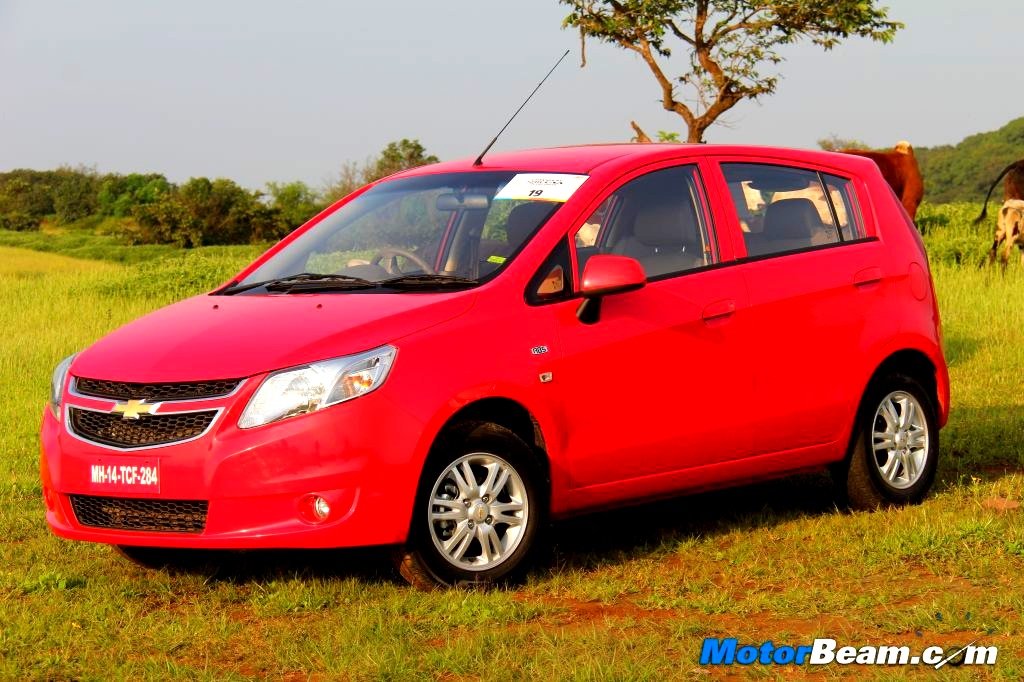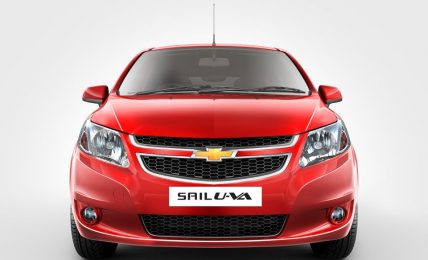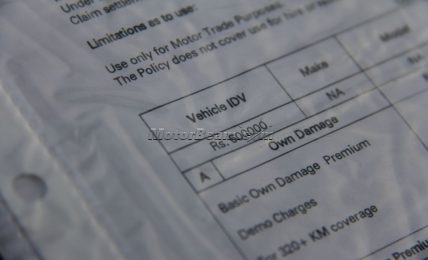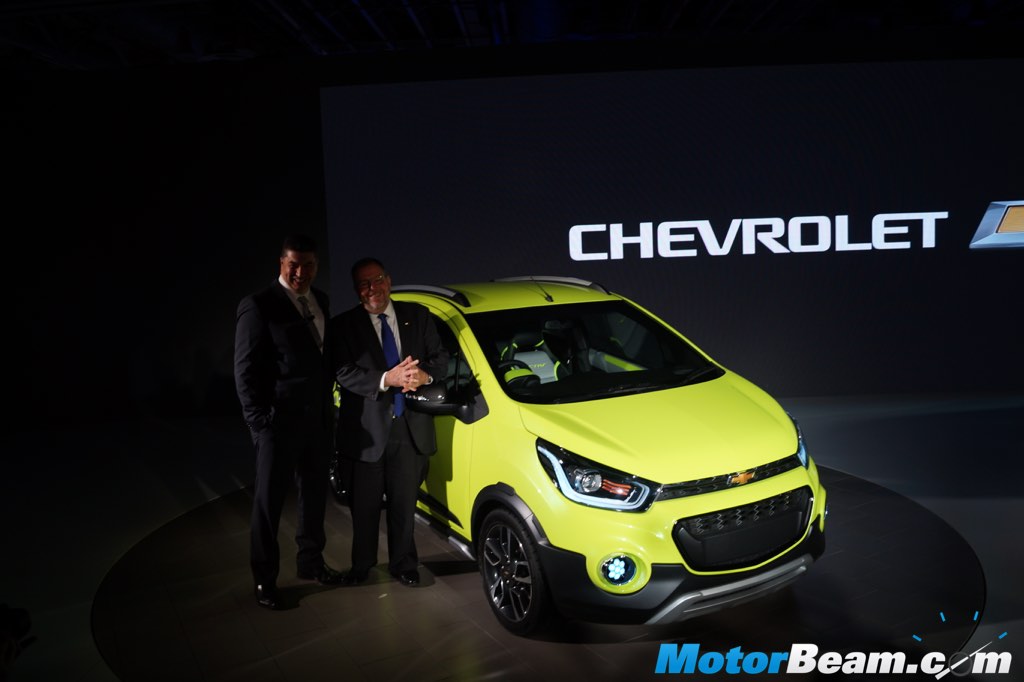
Chevrolet Sail U-VA Review
Car tested: 2012 Chevrolet Sail U-VA LT
Price OTR Mumbai: Rs. 7,98,110/-
Hatchbacks account for a major chunk of sales in the Indian market, which has prompted car makers to launch multiple offerings in this segment. A successful hatchback can turn the fortunes of an automobile company in India, just like it did for Ford with the Figo. Can Ford’s compatriot repeat the same success in the hatchback segment? The Chevrolet Sail U-VA is the weapon of choice for General Motors to boost presence in the country. The Chevrolet Sail is the result of GM-SAIC joint venture in China. The Sail U-VA is now headed to the volume packed hatchback segment in India, but can it help GM’s cause? We drive it to find out.
[flickr size=”center” float=”medium”]http://www.flickr.com/photos/motorbeam/8073068214/[/flickr]
Exteriors – The styling of the Chevrolet Sail U-VA will certainly not entail a second glance. The plain and conservative styling doesn’t look outdated, but doesn’t stand out either. The front incorporates the twin grille with a big Chevy logo right in between. The alloy wheels are quite similar to what is being seen on other Chevrolet cars while the side profile shows the almost 4-meters length of this hatchback. At the rear, there are vertically stacked tail lights, something not seen on modern cars anymore. The rear of the Chevrolet Sail U-VA seems to have some what of a Punto-ish feel to it, with the tail lights and reflectors being positioned in similar fashion. Overall the styling of the Chevrolet Sail hatchback is very conservative and the car will certainly not win any design contests.
[flickr size=”center” float=”medium”]http://www.flickr.com/photos/motorbeam/8073072649/[/flickr]
Interiors – Step inside and you are greeted by quite an airy cabin, thanks to the usage of brown and beige colors on the dashboard. The centre console is finished in silver and so are the circular surrounds on the side AC vents. Cost cutting is quite evident on the Chevrolet Sail U-VA with the fit and finish levels being just about average. Plastics are quite hard too and the plain dashboard just doesn’t appeal. The steering wheel looks out of place and the lack of colors on it makes it look like an after thought. The horn buttons are placed on either side of the 3-spoke steering wheel and takes time getting used to.
[flickr size=”center” float=”medium”]http://www.flickr.com/photos/motorbeam/8073062478/[/flickr]
The instrument cluster features an analog speedometer, digital display (for trip meter, odo meter, fuel meter) and a digital tachometer. This digital tachometer is difficult to read and understand. There is no dead pedal, nor is there height adjustment for the driver’s seat. Power window switches are placed right ahead of the gear lever, which is not the best place for these controls as it makes it difficult to operate. The audio system is not so easy to understand and use, although it is equipped with AUX, USB and Bluetooth functions. There is keyless entry but no steering mounted audio controls, climate control or on-board computer.
[flickr size=”center” float=”medium”]http://www.flickr.com/photos/motorbeam/8073070861/[/flickr]
There are no controls on the doors (other than the door opening lever). The door locks are pull out types which are difficult to operate as one has to turn all the way around to use them. The Sail has the indicator and wiper stalks on the right side (the ones we all are used to), unlike the ones seen on the Aveo, Optra and Cruze. The Sail U-VA has quite a few storage areas in the cabin, including one below the right most AC vent, above the glove box, next to the hand brake, below the audio system, etc. There are no bottle holders on the rear doors and the rear seats split in 60:40 ratio. The manual air-conditioner works well to keep things cool inside the Sail U-VA’s generous cabin.
[flickr size=”center” float=”medium”]http://www.flickr.com/photos/motorbeam/8073063184/[/flickr]
While the Chevrolet Sail U-VA doesn’t appeal in terms of quality of materials, fit, finish and features (there are no steering mounted audio controls, nor is there climate control or multi-information display), the car does offer large amounts of space. The front seats are comfortable while the rear seat offers excellent legroom and knee room. The rear seat is too inclined for our liking though and the seats could have had better materials and cushioning. The centrally placed fuel tank enables five to sit in the Sail in utmost comfort.
[flickr size=”center” float=”medium”]http://www.flickr.com/photos/motorbeam/8073063932/[/flickr]
Boot space is excellent, offering 248-liters of luggage capacity. It is not the best in the segment though but easily among the best in the hatchback space.
[flickr size=”center” float=”medium”]http://www.flickr.com/photos/motorbeam/8073068538/[/flickr]
Performance – The Sail U-VA replaces the Aveo U-VA, whose biggest drawback was the lack of a diesel heart. GM’s Indian engineers have plonked in the 1.3-litre Multijet diesel engine into the Chevrolet Sail U-VA, making this powertrain combination exclusive to the Indian market. However GM has used a different air-filter, exhaust inlet and turbocharger on this engine which they like to call SDE (Small Diesel Engine). The 1248cc oil burner produces 78 PS of power at 4000 RPM and 205 Nm of torque at 1750 RPM.
[flickr size=”center” float=”medium”]http://www.flickr.com/photos/motorbeam/8073060344/[/flickr]
The tuning of the 1.3-litre diesel engine is quite different to what we have seen before. Although turbolag is present, the diesel-powered Sail does move with gusto once the turbo kicks in at around 1800 RPM. Mid-range performance is very strong and power delivery is linear and smooth. High end performance of this engine is not the best though and power starts to sharply trail off post 4000 RPM. The strong mid-range gives the Chevrolet Sail very good in-gear acceleration. This engine is mated to GM’s own 5-speed gearbox, which has short throws. Engaging reverse is slightly different then what we are used to on 5-speed transmissions (you lift and push forward in the Sail).
[flickr size=”center” float=”medium”]http://www.flickr.com/photos/motorbeam/8073067001/[/flickr]
The petrol-powered Sail U-VA inherits the Beat’s 1.2-litre Smartech engine which produces 86 PS at 6000 RPM and 113 Nm at 5000 RPM. NVH levels are not the best and there is no sound deadening used on the hood either. The petrol Sail U-VA does sound smooth at idle and only gets vocal as you move higher up the powerband. In-gear acceleration is good and one can comfortably drive in city traffic without having to worry about progress. The petrol Sail U-VA is not as quick as the Swift but is relatively quick compared to competition. Both petrol and diesel variants will be strong on mileage and one can expect 12 km/l and 16 km/l in peak city driving conditions with the petrol and diesel models respectively.
[flickr size=”center” float=”medium”]http://www.flickr.com/photos/motorbeam/8073060698/[/flickr]
Ride, Handling and Braking – The Chevrolet Sail U-VA absolutely excels when it comes to ride quality. The vehicle offers one of the best and most comfortable rides in the segment. GM engineers have got the perfect setup and the Sail U-VA simply glides over the worst of roads. High speed stability is good and the car remains firmly planted to the road at all times. Brakes have quick bite and are assisted by ABS and EBD to ensure you stop quickly. Handling of the Sail U-VA is surprisingly good. There is a fair bit of body roll but the Sail does feel reasonably accurate. However the steering wheel just robs away everything from the car’s handling, offering a very vague feel. There is absolutely no feedback from the Sail’s steering wheel and it doesn’t feel well connected to the car.
[flickr size=”center” float=”medium”]http://www.flickr.com/photos/motorbeam/8073075551/[/flickr]
Conclusion – GM’s Aveo replacement has a lot going for it. It rides brilliantly, offers liberal amount of space and has strong performance. But the average styling and interiors will not draw customers so easily. The Beat is a smaller car than the Sail U-VA but has so much better interiors (we wonder how GM dealers will convince a Beat buyer to opt for a Sail U-VA). GM needs to price the Chevrolet Sail U-VA very aggressively, which coupled with the 3-years maintenance program can lure customers looking for a practical hatchback. The Sail U-VA does come across on top as a spacious and comfortable car for the average Indian hatchback buyer, but just don’t expect it to evoke an emotional connection which the Maruti Suzuki Swift or the Fiat Grande Punto manage to generate.
[flickr size=”center” float=”medium”]http://www.flickr.com/photos/motorbeam/8073069699/[/flickr]
Whats Cool
* Ride quality
* Space
* Performance
Whats Not So Cool
* Plastic quality
* Interior and exterior design
* Steering feedback
[flickr size=”center” float=”medium”]http://www.flickr.com/photos/motorbeam/8073074531/[/flickr]
Chevrolet Sail U-VA Specifications
* Engine: 1248 cc, 16V, DOHC, SDE (diesel), 1199 cc, 16V, DOHC, Smartech
* Power: 78 PS @ 4000 RPM (D), 86 PS @ 6000 RPM (P)
* Torque: 205 Nm @ 1750 RPM (D), 113 Nm @ 5000 RPM (P)
* Transmission: 5-speed manual
* Top Speed: 160 km/h
* 0-100 km/h: 15.50 seconds (D), 14.5 seconds (P)
* Fuel Consumption (as per ARAI): 22.1 km/l (D), 18.2 km/l (P)
* Fuel Type: Diesel and Petrol
* Suspension: Mcpherson struts with coil springs and stabilizer bar (Front), Semi-independant suspension with coil springs (Rear)
* Tyres: 175/70/14 Tubeless Radials
* Brakes: Ventilated Disc (Front), Drums (Rear), ABS, EBD
* Safety: ABS, EBD, Dual SRS Front Airbags
Chevrolet Sail U-VA Dimensions
* Overall length x width x height: 3946 mm X 1690 mm X 1503 mm
* Wheelbase: 2465 mm
* Front/Rear Track: 1462/1457 mm
* Ground clearance: 174 mm (D), 168 mm (P)
* Turning Radius: 5.15-metres
* Boot Volume: 248-litres
* Fuel Tank Capacity: 42-litres
* Kerb Weight: 1124 kgs (D), 1065 kgs (P)




